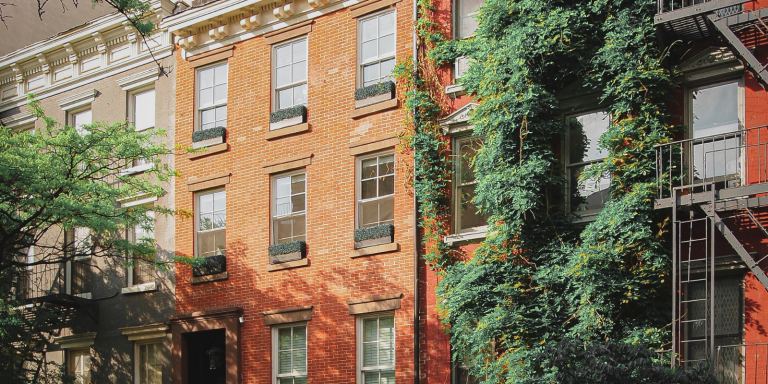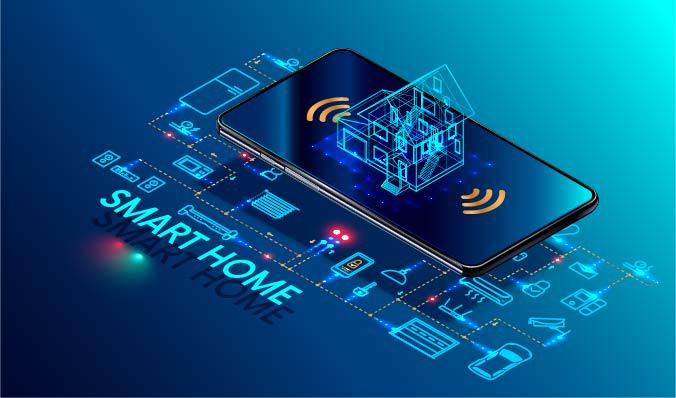How much does a smart home cost in 2024? a breakdown of expenses

Quick Read
If you want to convert your home into a smart home, you can expect to spend around $2,000 – $5,000 on average. DIY options start at just $50 for basic devices if you want to start small. Fully customized professional installs with all the luxury bells and whistles can run over $10,000.
Introduction
Upgrading your crib into a smart home might sound futuristic, but it’s easier and more affordable than you think. This guide breaks down realistic prices for decking out your pad with the latest tech. We’ll show you real costs for security, lighting, entertainment, and more. With the right budget and realistic expectations, anyone can gradually create their ideal automated sanctuary without breaking the bank. Let’s dive in!
What factors determine your smart home cost?
When budgeting for your smart home, there are a few key factors that’ll impact your final bill:
- Size of your pad – Bigger spots mean you need more gadgets to cover everything, longer wiring runs between rooms, and extra work time for installs. A studio apartment won’t cost nearly as much as a mini-mansion.
- How many systems you automate – Security, lighting, climate control, curtains, sprinklers…the more you want to control with your phone, the more your costs climb. Prioritize what’s most useful day-to-day and leave flashy stuff for later.
- Wired vs wireless setup – Having all your gear hardwired directly into your electrical provides the most solid performance, but that means big bucks for construction work. Wireless is awesome for avoiding massive construction fees. The gadgets connect to your WiFi network instead of needing electricians to run wires everywhere. Just make sure your router is centrally located so devices in far rooms don’t struggle for a signal.
- Types of tech you choose – For each area, like security, lighting, or A/V, you’ve got spendy high-end options and budget picks that do the basics. Know which features actually matter to you rather than overspending just to flex. Your needs determine the price points.

Breakdown of smart home system category costs
Next, let’s take a closer look at prices for the most popular smart home categories, according to statistics from HomeAdvisor, a leading home services marketplace in the US.
1. Home security – $700 to $5,000 average cost
Security systems make up a major part of most smart homes. You can start with a video doorbell for $100 to $200. More advanced options like whole home security packages with cameras, motion sensors, and smart locks typically run $1,500 and up.
2. Smart lighting – $1,000 to $3,000 average cost
Automating your home’s lighting with smart bulbs, switches, and hubs costs approximately $1,000 to $3,000 depending on home size. Individual bulbs are $15 to $30 each. Switches are $20 to $80 per unit. Smart hubs to control everything cost $60 to $300.
3. Heating and cooling – $800 to $2,000 average cost
Smart thermostats range from $120 to $300 each. Upgrading your full HVAC system for smart control averages $2,000 to $4,000. This allows remote temperature adjustment and scheduling.
4. Home entertainment – $30 to $2,000 average cost
When it comes to smart home entertainment, you have options at both ends of the budget spectrum. On the low end, you can start automating your system for as little as $30 by using smart power outlets to remotely control your TV, stereo, game consoles, etc.
For whole-home audiovisual integration, costs scale up significantly. This involves installing ceiling speakers throughout the house, setting up surround sound systems, wiring for wall-mounted touch screens and integrated voice controls, and more. Fully automating the entire home entertainment experience with premium components can cost upwards of $2,000 or more.
5. Lawn and garden – $200 to $500 average cost
Outdoor smart home tech helps take the hassle out of lawn and garden upkeep. Basic irrigation controllers that connect to your hose faucets and schedule watering times start at around $100. Add-on sensors that monitor moisture and weather conditions average $50 per sensor.
On the higher end, robot lawnmowers completely automate grass-cutting for you. These roam within a set boundary wire to maintain your lawn on their own. Expect to pay $800 to $2,500 depending on lawn size and feature sets.
6. Smart curtain – $60 to $1,000 per window
When it comes to smart curtains, pricing can vary based on brand, features, and integration. Affordable models can start at around $60-$150 per window, offering features like voice control, app control, and scheduling. Mid-cost options can cost $200-$500 per window and may include integration with larger home automation systems. High-cost models from premium brands can run $500-$1000 or more per window for additional capabilities. The type of smart curtains selected will depend on your budget and desired functionality.

DIY vs professionally installed smart home systems
Another major factor in your smart home budget is the installation route – DIY or professional.
If you’re hands-on and willing to learn, DIY kits cost $250-$3,000 for the gear you’ll need. You’ll invest time upfront figuring out setup and connections but save substantially over hiring an installer. DIY works well for smaller, straightforward upgrades focused on a few functions.
Pro installation ranges from $2,000-$10,000+ based on home size and scope of features. While pricier, you benefit from turnkey service and technical expertise integrating extensive systems seamlessly. If you want a fully voice-controlled smart home orchestrating countless devices, pros handle the complex programming and configurations.
The DIY approach takes effort but saves money for targeted upgrades. For whole home automation, pro installers make the process smooth and uncomplicated.

Look for no-hassle installation when picking smart products
Wanna save big on smart home installation fees? Stick to devices that are designed to be set up in just a few minutes, even for total amateurs.
For example, SwitchBot Curtain can be attached to your existing curtains in just a few seconds – simply clip it on in a few easy steps. No wiring, drilling, or pro installation is required. Once it’s on, you can control it by app or tell Alexa or Google to open and close your curtains for you.
Other gadgets like wireless security cams, smart bulbs, and smart plugs are about as easy – just plug in and connect to your WiFi. Following the simple instructions is pretty much foolproof.
By going for smart home tech that’s deliberately made to be user-friendly from the get-go, you can gradually turn your place into a smart home without needing to hire pros or have mad technical skills.

Don’t forget about ongoing costs for your smart home
The initial installation is just the first step – you’ll also need to budget for maintaining your automated home smoothly over time. Like any technology, smart devices require regular upkeep:
- Software updates periodically to fix bugs and add new capabilities. Be proactive about installing patches.
- New batteries every 2-3 years for wireless sensors and gadgets to prevent failures at inopportune times.
- Addressing any technical issues quickly before they escalate into larger problems. A little research or calling support can prevent more extensive repairs later.
- General repairs when components eventually wear out. Smart home tech still experiences normal wear and tear.
Optional service plans provide peace of mind. For $100-$200 per year, you get priority assistance troubleshooting, preventive tune-ups, and keeping everything optimized. It is not required but can minimize headaches.
Allocating a modest yearly budget for upkeep keeps your smart home purring like a well-oiled machine. With some care and attention, your automated abode will provide comfort, convenience, and enjoyment for many years to come.

Final thoughts
When you get down to it, building a fully automated smart home takes some serious dough. But you don’t have to break the bank to get started. Focus first on affordable DIY devices that solve your biggest headaches. As you get used to voice controls and smart features, you can gradually level up your system over time.
Eventually, you’ll have all the high-tech convenience you desire without mortgaging your house for it. With reasonable expectations and budgeting, anyone can craft a smart home that fits their lifestyle at a price they can handle.
Q&A
Q1: What is the cost of a home automation system?
You can expect to spend around $2,000-$5,000 on average to deck out your home with automation. DIY kits can start as low as $500 for basic functions, while pro-installed systems with whole-home control can run over $10,000. The final cost depends on crib size, how many gadgets you add, and whether you go DIY or hire pros.
Q2: How much does it cost to install a smart home panel?
A central smart hub or control panel that lets you run all your smart devices from one app will run you $100-$500 typically. If your electrical system needs an upgrade to support it, tack on another $1,000-$3,000 for the wiring work.
Q3: How much does a smart lighting system cost for a house?
To outfit an entire home with smart lighting, plan for $1,000-$3,000 – gives you smart bulbs for $15-$30 each and in-wall switches for $20-$80 per. The final light bill depends on how big your pad is and how many lights you add.
Q4: Is a smart home profitable?
While you need some initial investment, studies show smart thermostats and lighting can cut energy costs by 5-15% by managing usage smarter. Whole home automation makes it easy to control everything efficiently. Over time, the energy and security benefits translate to more peace of mind and leisure time to enjoy your space.
Read More
- Are smart locks really trustworthy?
- It’s now even better than ever before… SwitchBot Curtain 3 is here!
- How to set up SwitchBot Hub Mini
- SwitchBot: Pan/Tilt Cam VS Indoor Cam
- Blind Tilt, grouping functionality is finally here!
How to Protect Your Smart Home from Hackers
How Much Money Can You Save with a Smart Home?



